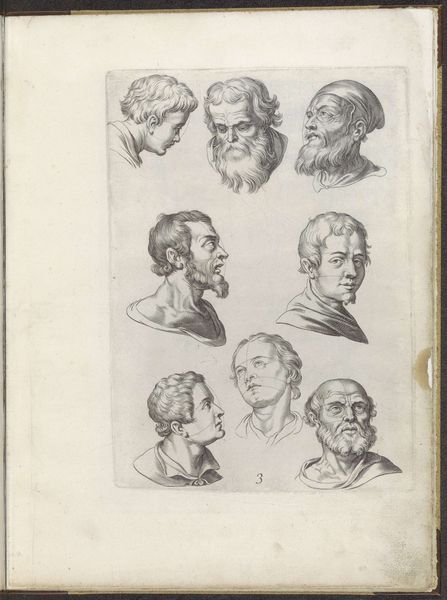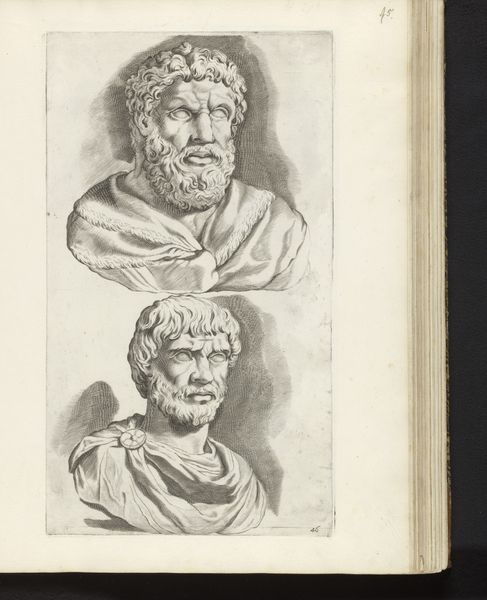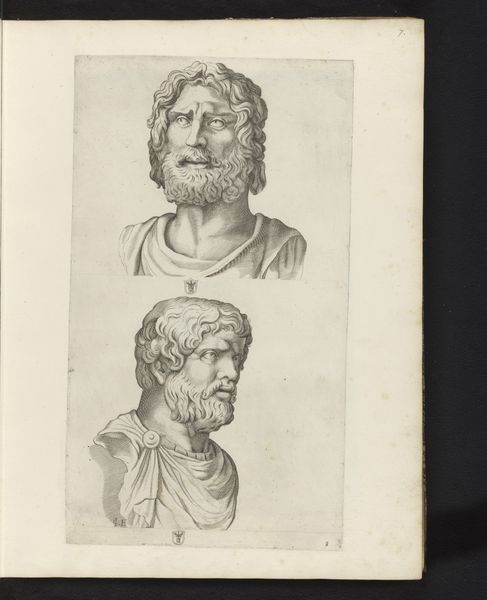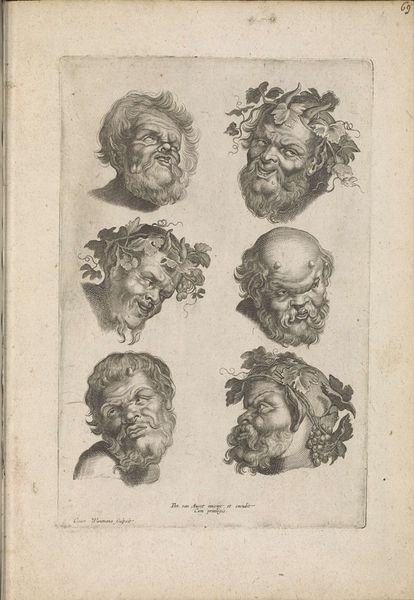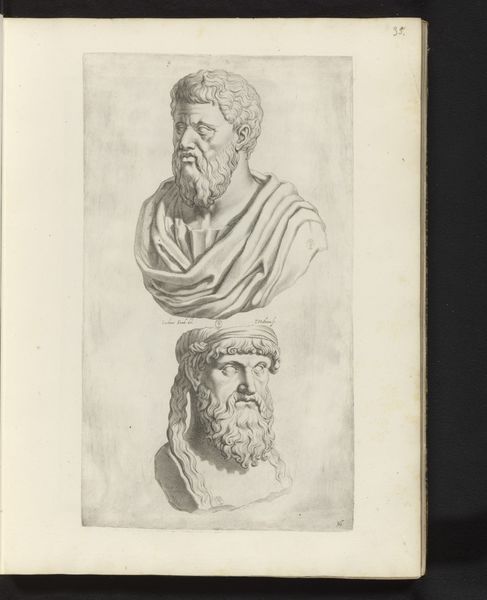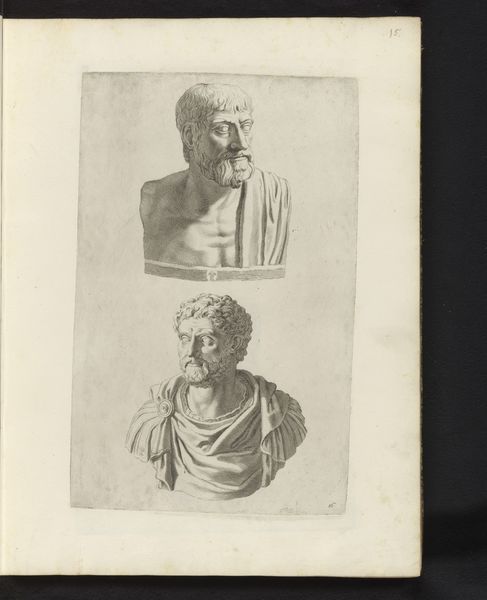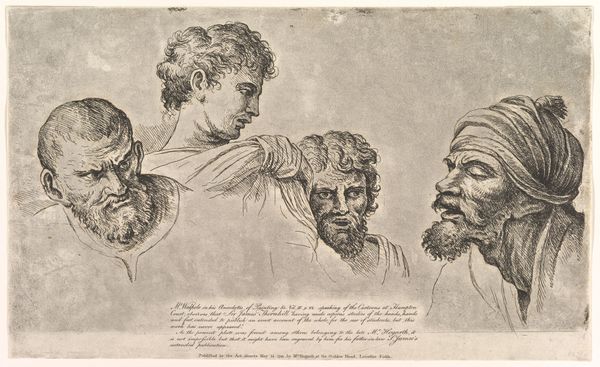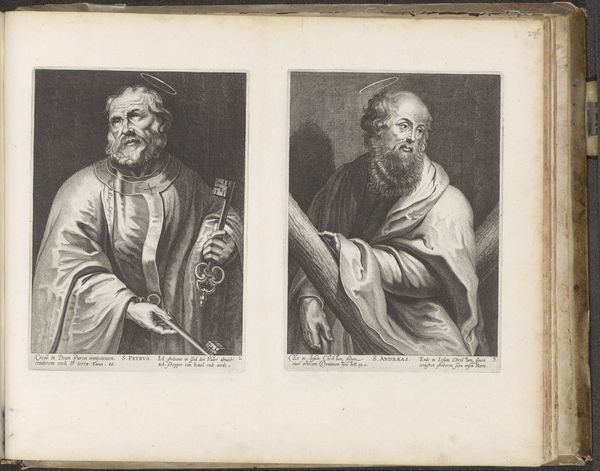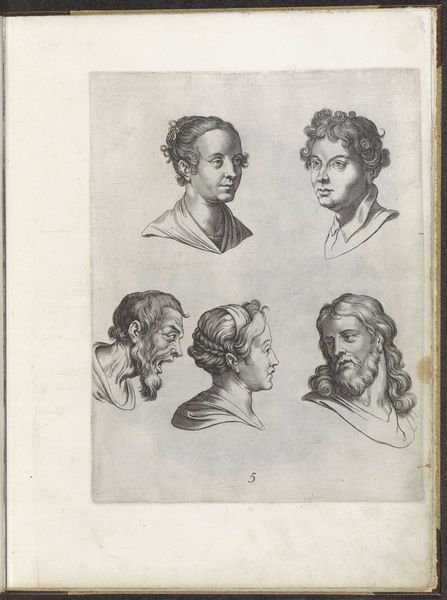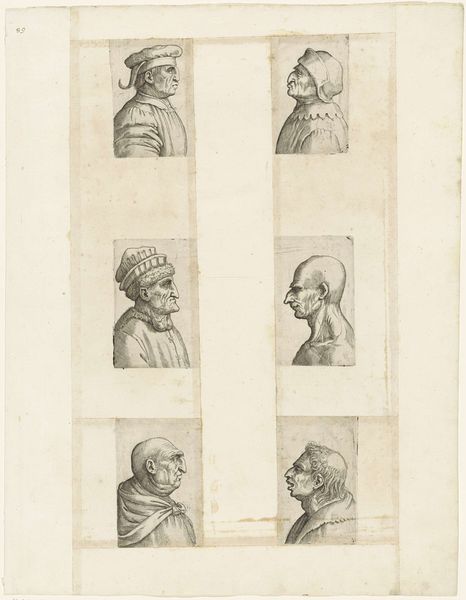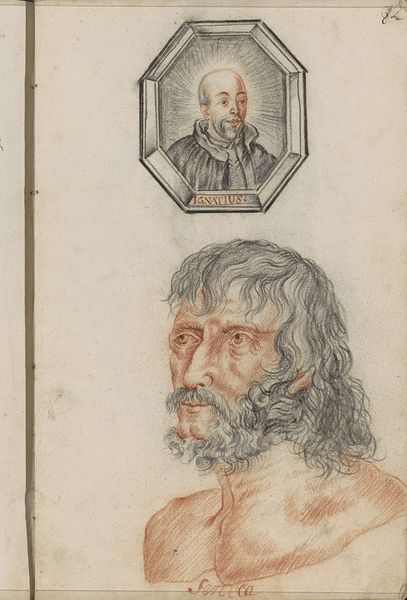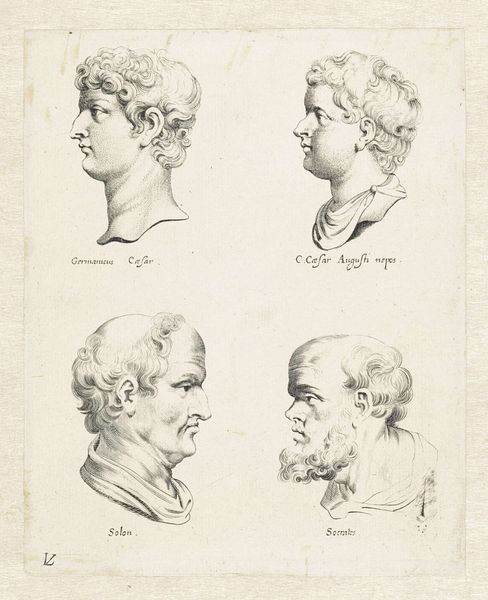
drawing, paper, ink
#
portrait
#
drawing
#
pencil sketch
#
mannerism
#
paper
#
11_renaissance
#
ink
Dimensions: height 271 mm, width 185 mm
Copyright: Rijks Museum: Open Domain
Pieter de Jode the Elder made this print of four male faces sometime in the late 16th or early 17th century. It's a study of different emotional states, each face etched with a distinct expression. Prints like this served a vital pedagogical role at the time. Academies were still in their infancy, so artists often learned by copying prints of classical sculptures, or model books. De Jode's image belongs to this tradition, but rather than idealised beauty, he captures a range of human affect. Made in the Netherlands, the image reflects a culture deeply engaged with the display, study, and classification of the natural world. This was a society that valued knowledge and observation. The expressions are intense, even melodramatic, reflecting the influence of theatrical traditions. To understand this print fully, we could look at the history of art education during this period. We might examine contemporary texts on rhetoric and expression, or explore the rich visual culture of the Dutch Golden Age. By doing this, we can better appreciate how these faces reflect the social, cultural, and institutional context of their creation.
Comments
No comments
Be the first to comment and join the conversation on the ultimate creative platform.
